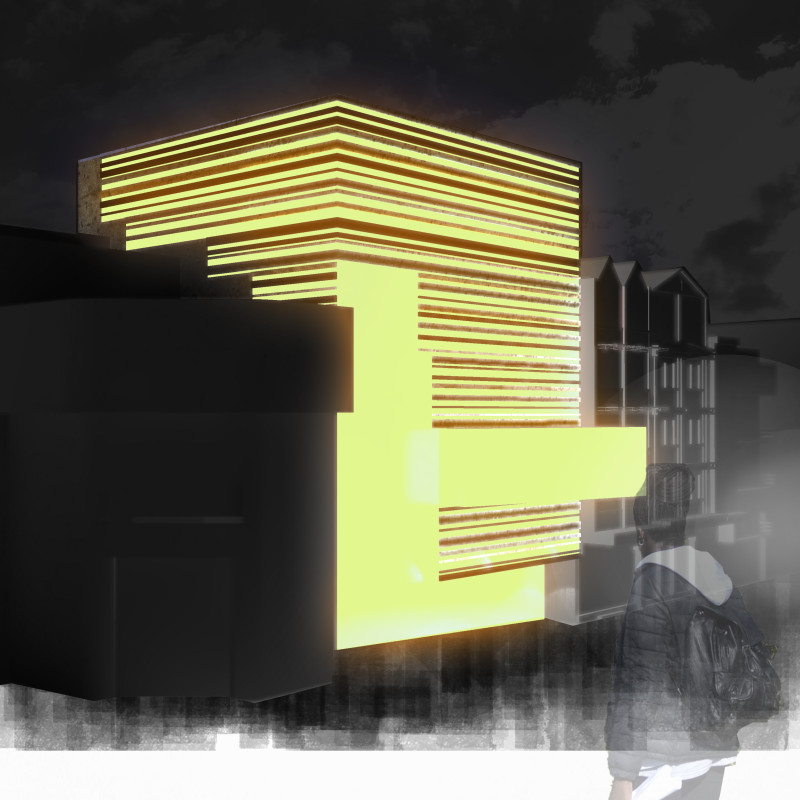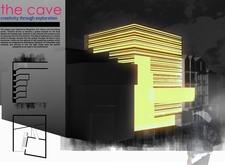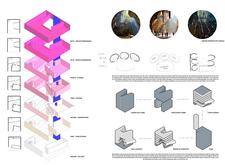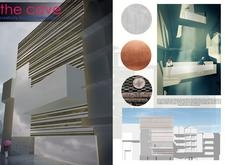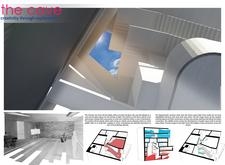5 key facts about this project
The architectural design features a layered composition, with a series of geometric forms that create a dialogue with the surrounding environment. This design approach allows the structure to resonate with the urban fabric while inviting natural light and ventilation into the space. Each layer serves a distinct purpose, accommodating the diverse functions of the building, including private artists’ studios, public galleries, and collaborative workspaces. The careful consideration of these functional areas reflects a commitment to fostering creativity and interaction among users, encouraging a sense of community and shared experience.
One of the project's notable aspects is its materiality. The primary use of white concrete establishes a solid foundation, while glass elements strategically integrated into the façade enhance transparency and fluidity. These materials work together to create an inviting atmosphere, allowing the building to interact seamlessly with its surroundings. The incorporation of copper accents adds a distinctive touch, with its potential to develop a unique patina over time, further connecting the structure to Bangkok's evolving identity.
The interior layout is another critical element of the design. It promotes flexibility, allowing spaces to accommodate a variety of uses and adapt to the needs of differing artistic practices. Natural light wells and atriums provide illumination and contribute to a refreshing indoor environment that harkens back to the naturally occurring light found in caves. This thoughtful inclusion of light not only enhances the workspaces but also establishes a connection between the interior and the outdoor environment, inviting nature into the creative process.
Unique approaches within the design underscore the architect's vision of merging art with nature. The use of cantilevered elements creates outdoor spaces that encourage social interaction and extend the usability of the building beyond its walls. These outdoor terraces provide breathtaking views of the surroundings, fostering a connection to the rich cultural context of Bangkok. The interplay between solid and void, light and shadow, creates a dynamic visual experience that changes throughout the day, paralleling the ebb and flow of artistic inspiration.
Overall, "The Cave" stands as an architectural expression of exploration and community, emphasizing the importance of creative spaces in an urban context. Its innovative design and functional adaptability reflect a broader dialogue surrounding contemporary architecture in Bangkok. For those interested in delving deeper into the architectural plans, sections, and ideas that inform this project, further exploration of the design details will provide a comprehensive understanding of its significance and impact. Discovering these elements offers invaluable insight into how architecture can shape and enrich community interactions.


